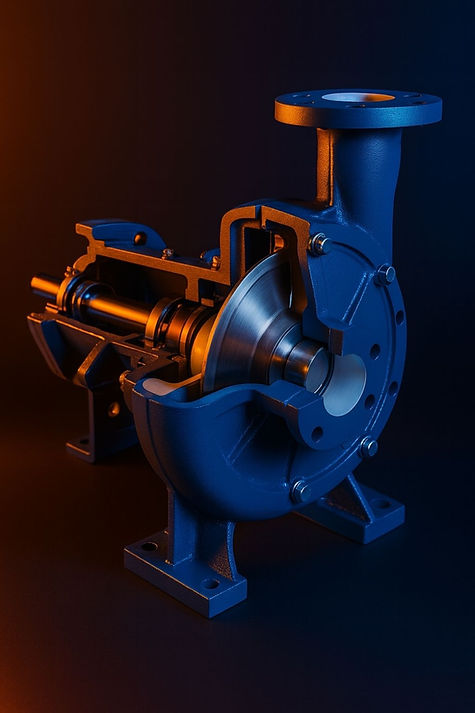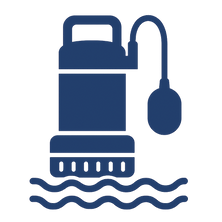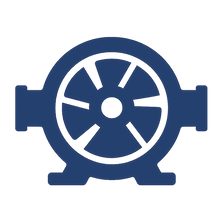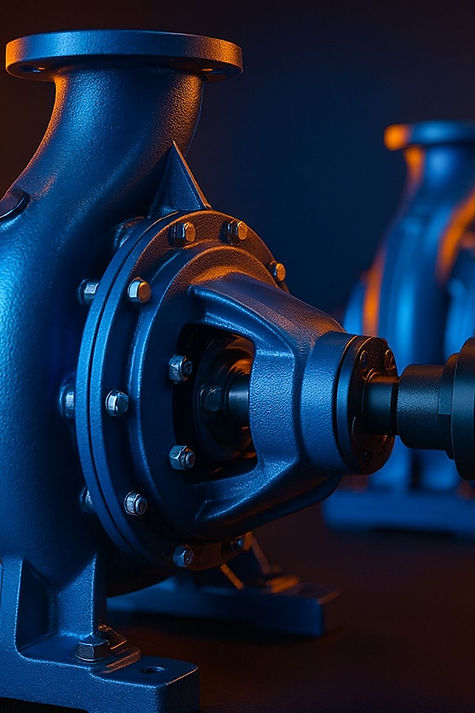
Dynamic Pumps in Cape Town: Classification of Different Pump Types - Centrifugal and Submersible
Dynamic pumps convert mechanical energy into pressure energy. A pump is a mechanical device that turns a motor’s work into motion in the liquid. Dynamic pumps use a rotating impeller to give kinetic energy to a fluid. The pump casing turns that energy into pressure energy for the flow of the fluid. These pumps include centrifugal pump types, axial flow pumps, and other flow pumps. Dynamic and positive displacement pumps serve different needs compared to positive displacement pumps. Use this guide for pump selection for a specific application. Learn how pumps and their applications differ across industries in Cape Town.
Dynamic Pump Working Principles and Classification of Pumps
A dynamic pump adds energy to the liquid through velocity. The impeller blades rotate at speed and create centrifugal force. The pump impeller throws liquid from the center of the impeller to the outer rim. The pump operates with a clear path from inlet to discharge pipe. The pump shaft links the motor to the pump rotor. The rotor and the pump rotor must stay aligned for best pump performance. The diameter of the pump and the types of impellers set the duty point. A single stage pump is common. A multistage pump adds head for high lifts. Use two pumps for duty and standby service. Place the standby unit parallel to the pump for resilience. Standard pumps fit many services. Pumps tend to run more efficiently at the BEP range. Centrifugal and axial-flow pumps form the main dynamic families. Axial designs push flow parallel to the pump centerline. This motion uses a propeller rather than a closed wheel.

Pump Type vs Type of Pump: How to Choose
Select the right type of pump by matching duty to data. Confirm head, flow rate, and pressure of the liquid. Check liquid temperature and solids. Review suction limits at site. Review the pumping system for pipe size and layout. A pump is a mechanical device, yet every site is unique. Use different types of pumps for each specific application. Dynamic pumps move fluid where low to medium viscosity rules. Reciprocating pumps suit dosing or very high head. Piston pumps and diaphragm pumps belong to that group. Gear pumps and lobe pumps sit in the positive displacement set. Pumps available from our Cape Town team cover both families. We help you choose the right pump to boost reliability and cost control.

Submersible Pumps as Water Pumps
A submersible unit is a dynamic pump placed below the water line. Submersible pumps live in wells, pits, and sumps. Borehole pumps move fluid from depth to surface. You set an inlet screen to protect the impeller. You fit a discharge pipe to lift liquid to the tank. Add a valve to protect the line on shutdown. These pumps are designed for clean water, drainage, and sewage transfer. Use them as irrigation pumps on farms near Cape Town when the site favors deep intakes.

Common Type of Dynamic Pump: Centrifugal
A centrifugal pump dominates this class in Cape Town. The rotating impeller adds kinetic energy to a fluid and lifts the pressure of the liquid. Centrifugal pump types include end-suction, inline, split-case, and multistage options. Each type of pump uses an impeller profile that suits the liquid and duty. Types of impellers include open, semi-open, and closed. The pump casing guides the stream to the discharge pipe. A valve at the header can create positive pressure at start. A centrifugal pump suits water supply, HVAC loops, and fire protection systems. Use a stage pump for modest heads. Use a multistage pump when you must boost high heads. A rotary pump is not the same device here. A rotary label in this section refers only to the motion of the wheel.

Vane Pumps as a Type of Dynamic Pump
Vane pumps sit within the dynamic pump family in select duties. Each vane sits in a rotor slot and can rotate to track the pump casing. The impeller-like ring builds velocity and raises pressure energy in a small frame. This class fits clean liquid at modest flow rate. It suits transfer skids where compact layout matters. It is not the same as rotary vane pumps in the PD family. Those PD units meter volume per cycle. Use our team to compare vane vs centrifugal for your type of pump choice.
Pump Type vs Type of Pump: How to Choose
We survey your site and build a pumping system that works. Our engineers size a centrifugal pump for plant water supply. We also specify axial flow pumps for canals and outfalls. We balance pump selection against energy to the liquid. We verify suction margins and the center of the impeller setting.
We source pumps include standard pumps and special builds. We deliver pumps available from trusted makers. We commission the pump so the pump operates within limits. We set controls to hold positive pressure on start. We check the pump shaft line-up and the rotor runout.
How to Choose the Right Pump for Your Site
Start with process needs and the flow rate. Map the duty for irrigation or process water. Set the target head and the pressure energy at the header. Confirm the liquid grade and any solids. Validate the discharge pipe and the pipe losses. Compare centrifugal and axial designs for efficiency. Compare dynamic and positive displacement pumps for the job. Check pump selection for cavitation risk at suction. Review pump impeller options for solids or fibers. Confirm the pump rotor strength for the rpm.
Review the pump is a mechanical device with many parts. Rotate the shaft by hand during checks. Confirm the rotor is free. A rotary label here refers to the wheel motion only. Set controls that ramp speed to the target flow rate. Use gear pumps or piston units only when the process demands constant volume.
Use diaphragm pumps for shear-sensitive media. Pick a rotary pump only where that design fits the liquid. Plan final checks before order. Pick the pumps include accessories that match the build. Document pumps move best when sized for the curve.
